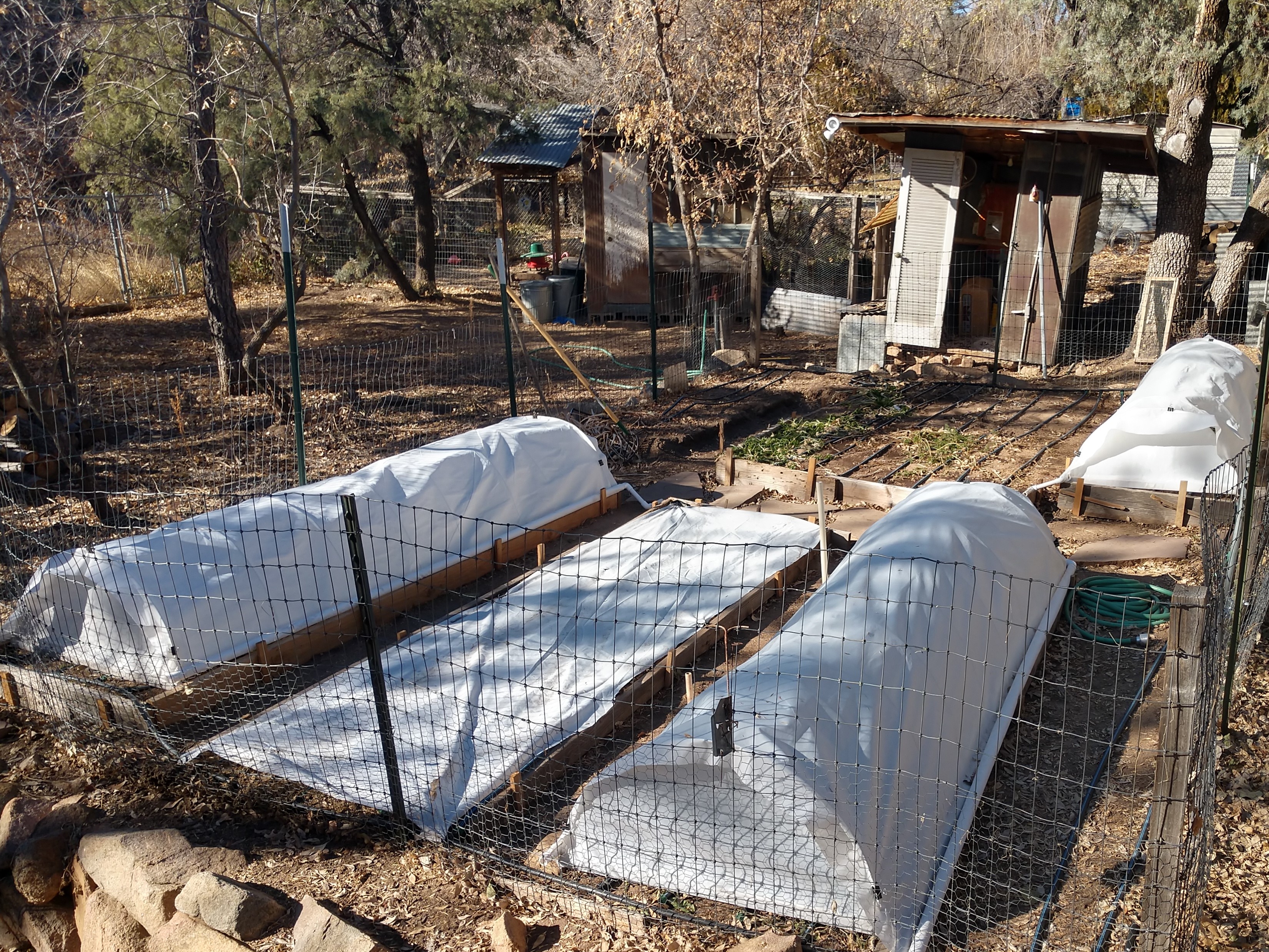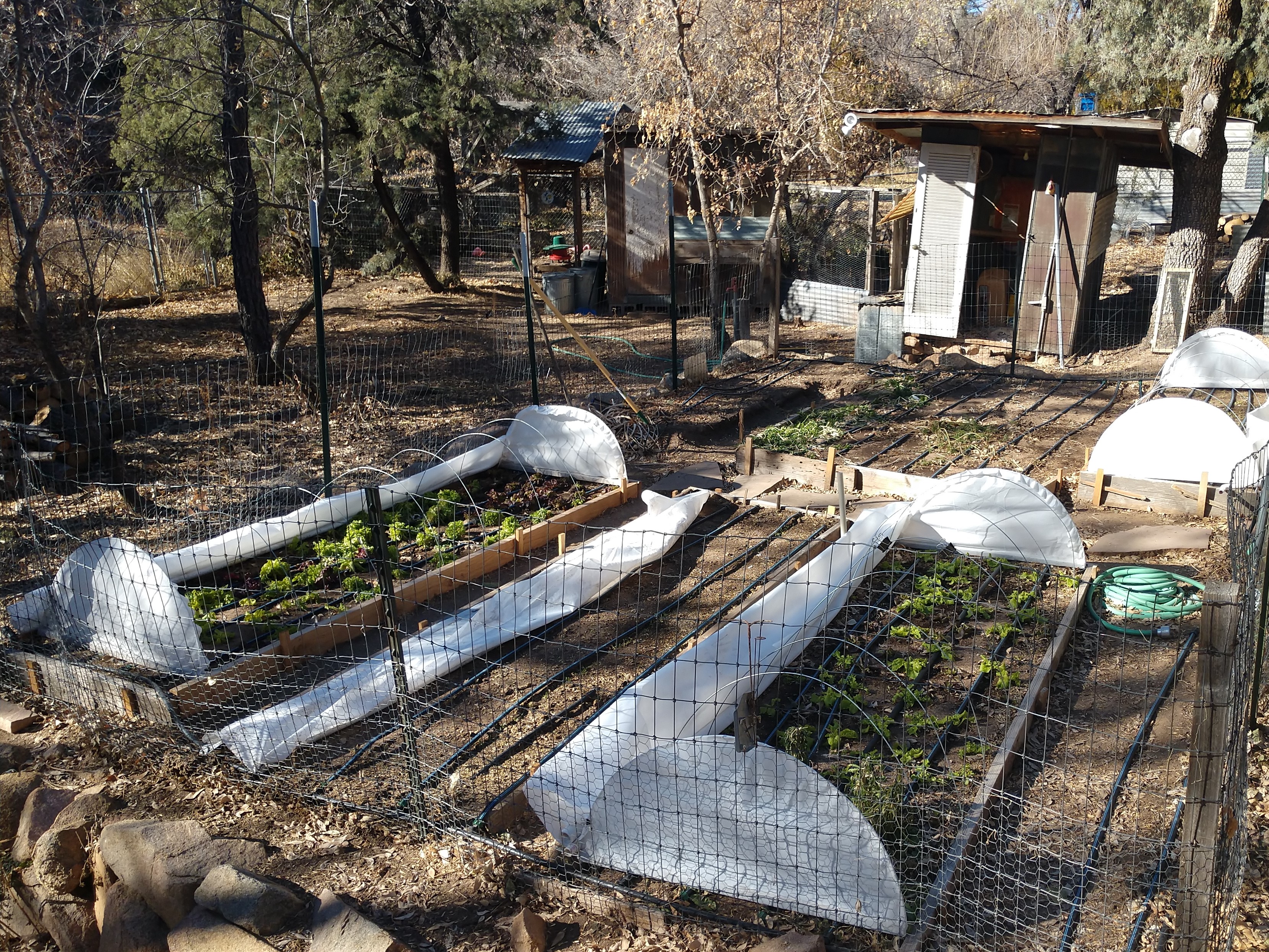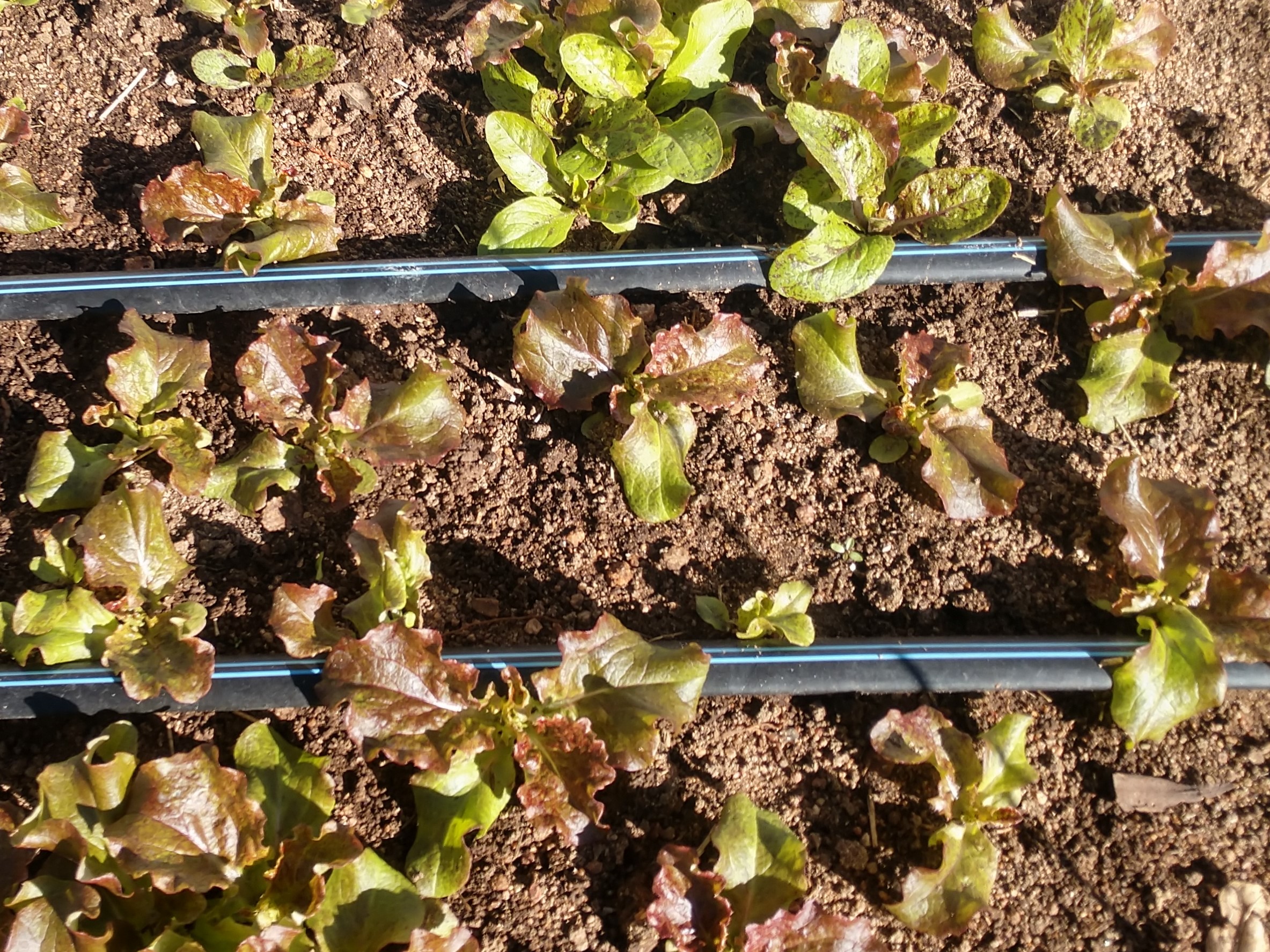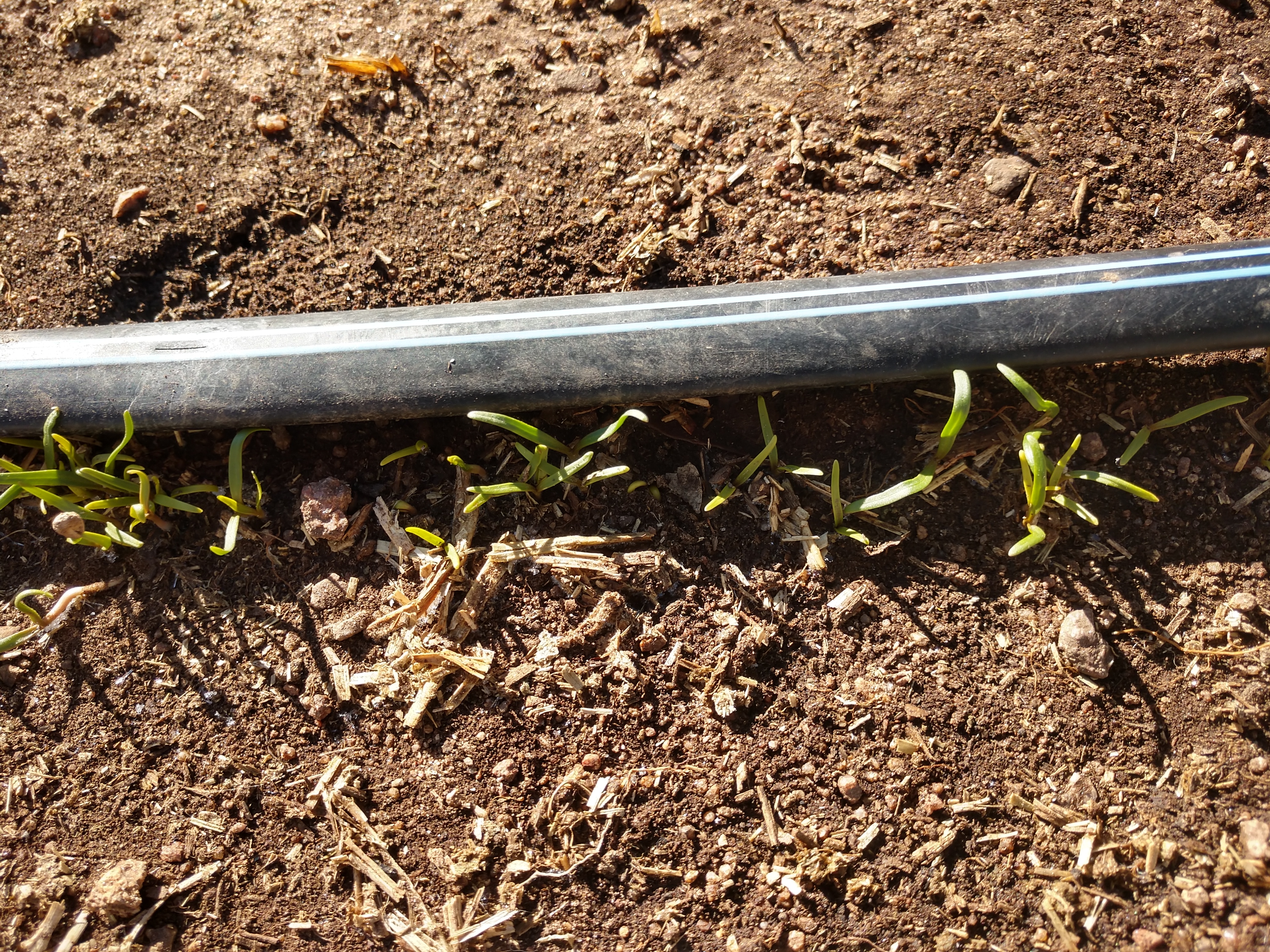 Local Foods in a Pandemic - December 23, 2020 Jeff Schalau, Agent, Agriculture & Natural Resources University of Arizona Cooperative Extension, Yavapai County Since last March, society has undergone great changes while also mourning the losses of many friends and relatives due to COVID-19. During this time, I realize more and more how important fresh food and exercise are to mental and physical health. The University of Arizona Cooperative Extension promotes science-based information and programs that improve the lives of local communities. This has included promoting and following the Centers for Disease Control and Prevention COVID-19 guidelines for mitigating spread of the virus and encouraging safe practices that can help people maintain their health. I also continue to promote science-based gardening practices which result in fresh, healthier food. Below are some ideas that may inspire you. Vegetable garden production does slow down during the winter months, but cool season crops can be grown with frost protection year-round. In my columns, I have focused on techniques that can extend the growing season into and throughout the cold months. I currently have lettuce, arugula, and spinach actively growing under row covers and low tunnels. They are not growing rapidly now, but in February, they should be producing. Garlic is also in the ground for next summer’s harvest and I have a few mature carrots that are “holding” in the ground and will be harvested soon. The photos included below were taken on December 16, 2020. Many of us can compost our kitchen and garden waste and use this resource to increase the productivity of our garden soil. Others choose to maintain composting worm bins to recycle kitchen waste. Worm bins can be kept on the back porch, garage, or even under the kitchen sink. There are also ways you can contribute your compostable materials to community gardens and organized composting projects. The Prescott Farmers Market (https://www.prescottfarmersmarket.org/we-want-your-kitchen-scraps/) and the Compost Crowd in Sedona (https://www.compostcrowd.com/) have programs that accept kitchen waste and provide compost to participants in return. Community gardens are another option for those with limited space to grow food. Community Gardens are places where residents that do not have garden space at home can rent a plot to grow produce. They usually have some structure and rules to guide participants and serve as gathering spots for like-minded folks to grow and share food and fellowship. There are many Community Gardens across Yavapai County. Some of these are sponsored by cities/towns as well as churches, NGOs, and subdivisions. Beginning gardeners sometimes need help getting started. Cooperative Extension has resources which include publications and two Master Gardener Help Desks. The Help Desks are email only (see addresses below)at this time but would also be available for face-to-face interactions under non-COVID conditions. In addition, my Backyard Gardener website has 22 years of my weekly newspaper columns that cover gardening and landscaping topics as well as pest and disease management. The site is searchable and archived chronologically. It also has additional resources (photos and publications) not included in the newspapers. Most challenges you could encounter in Yavapai County gardens, orchards, and landscapes have been covered there and similarly, the link is provided below. If you are a Facebook user, consider visiting (and “Liking”) the Yavapai County Master Gardener Facebook Page. You can find it by going to Facebook and typing in the name. Devoted Master Gardener volunteers post timely information and I post links to my columns, photos of my garden, and other helpful gardening information. You can also support local food production by patronizing a local Farmer’s Market. The Prescott Farmer’s Market and Sedona Community Farmer’s Market operate year-round and several other Farmer’s Markets and roadside stands are open during the growing season. We are fortunate to have growers in the Phoenix area that produce crops throughout winter and participate in our local markets. Community Supported Agriculture (CSA) is another way to access local foods. A CSA is a “subscription” that provides local produce on a scheduled basis. More information about local farmer’s markets, CSAs, and producers is available online at: https://localfresh.info/. This is also the time of year that seed catalogs are becoming available and gardeners begin to dream of next year’s crops. I hope this column inspires new gardeners to get started and experienced gardeners to try new crops and growing methods. See below for photos and additional information. You can follow the Backyard Gardener on Twitter – use the link on the BYG website. If you have other gardening questions, email the Master Gardener Help Desk in Prescott (prescottmg@gmail.com) or Camp Verde (verdevalleymg@gmail.com) and be sure to include your name, location, and phone number. Find past Backyard Gardener columns or provide feedback at the Backyard Gardener web site: https://cals.arizona.edu/yavapai/anr/hort/byg/. Images  My home garden in Prescott, AZ on December 16, 2020. The low temperature was 19 degrees F the previous night and this has been a common occurance for a few weeks. Low tunnels are covered in this photo and contain mostly lettuce and the flat row cover in the middle has germinating spinach and arugula as well as planted garlic and kale which have not yet emerged (photo by Jeff Schalau, University of Arizona).
My home garden in Prescott, AZ on December 16, 2020. The low temperature was 19 degrees F the previous night and this has been a common occurance for a few weeks. Low tunnels are covered in this photo and contain mostly lettuce and the flat row cover in the middle has germinating spinach and arugula as well as planted garlic and kale which have not yet emerged (photo by Jeff Schalau, University of Arizona). My home garden again in Prescott, AZ on December 16, 2020. Low tunnels are uncovered and lettuce plants of different ages are growing in each. The low tunnels offer more protection (warmer temperatures) than flat row cover. The oldest planting (direct seeded on August 21, 2020) is on the left. The next oldest lettuce crop is on the lower right which was direct seeded on October 10, 2020. Drip tape for irrigation is visible, but is not being used at this time of year. The beds are hand watered about once per week (photo by Jeff Schalau, University of Arizona).
My home garden again in Prescott, AZ on December 16, 2020. Low tunnels are uncovered and lettuce plants of different ages are growing in each. The low tunnels offer more protection (warmer temperatures) than flat row cover. The oldest planting (direct seeded on August 21, 2020) is on the left. The next oldest lettuce crop is on the lower right which was direct seeded on October 10, 2020. Drip tape for irrigation is visible, but is not being used at this time of year. The beds are hand watered about once per week (photo by Jeff Schalau, University of Arizona). This is a close-up of the newest crop of lettuce which was direct seeded on October 31, 2020 in the low tunnel on the upper right in previous photos. It needs thinning and we will get a couple of salads from the thinned plants. Other plants may be transplanted to optimize spacing in all three low tunnels. The red, leafy lettuce with the wavy leaf margins is called 'Vulcan' and the lighter, smooth-edged, Romaine type is 'Flashy Trout Back' for the small reddish speckles barley visible on the leaves. Both of these varieties are new to my garden (photo by Jeff Schalau, University of Arizona).
This is a close-up of the newest crop of lettuce which was direct seeded on October 31, 2020 in the low tunnel on the upper right in previous photos. It needs thinning and we will get a couple of salads from the thinned plants. Other plants may be transplanted to optimize spacing in all three low tunnels. The red, leafy lettuce with the wavy leaf margins is called 'Vulcan' and the lighter, smooth-edged, Romaine type is 'Flashy Trout Back' for the small reddish speckles barley visible on the leaves. Both of these varieties are new to my garden (photo by Jeff Schalau, University of Arizona). These spinach seedlings are an F1 hybrid variety called 'Auroch'. They were planted on November 21, 2020 and have germinated during very cold weather. I would have grown then under a low tunnel too, but I need to build additional tunnel end covers. I planted an additional row of this spinach on December 6, 2020 which has not yet germinated (photo by Jeff Schalau, University of Arizona).
These spinach seedlings are an F1 hybrid variety called 'Auroch'. They were planted on November 21, 2020 and have germinated during very cold weather. I would have grown then under a low tunnel too, but I need to build additional tunnel end covers. I planted an additional row of this spinach on December 6, 2020 which has not yet germinated (photo by Jeff Schalau, University of Arizona).Additional Resources Ten Steps to a Successful Vegetable Garden, University of Arizona Cooperative Extension extension.arizona.edu/sites/extension.arizona.edu/files/pubs/az1435-2015.pdf Composting in Home Gardens, University of Minnesota Extension extension.umn.edu/how-manage-soil-and-nutrients-home-gardens/composting-home-gardens#composting-structures-882310 Vermicomposting, North Carolina State University Extension composting.ces.ncsu.edu/vermicomposting-2/ Floating Row Cover, University of Maryland Extension extension.umd.edu/hgic/topics/floating-row-cover Low Tunnels for Home Gardens, Backyard Gardener, University of Arizona Extension cals.arizona.edu/yavapai/anr/hort/byg/archive/lowtunnel.html |